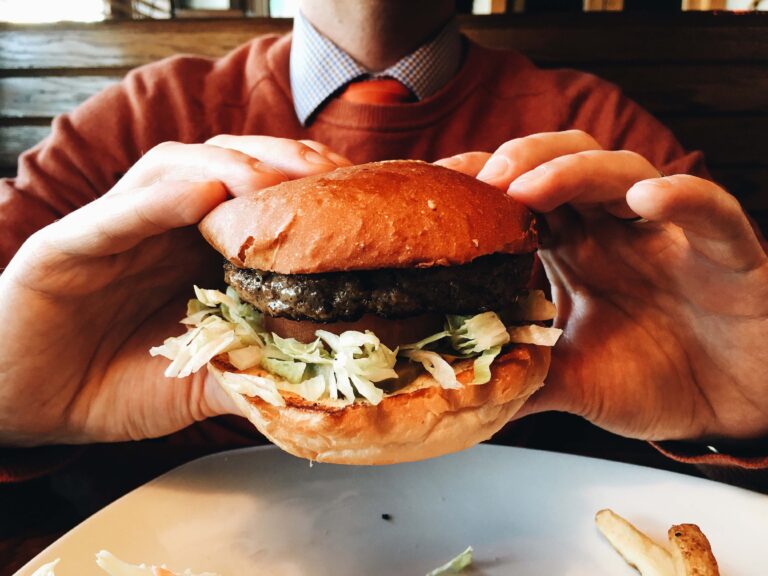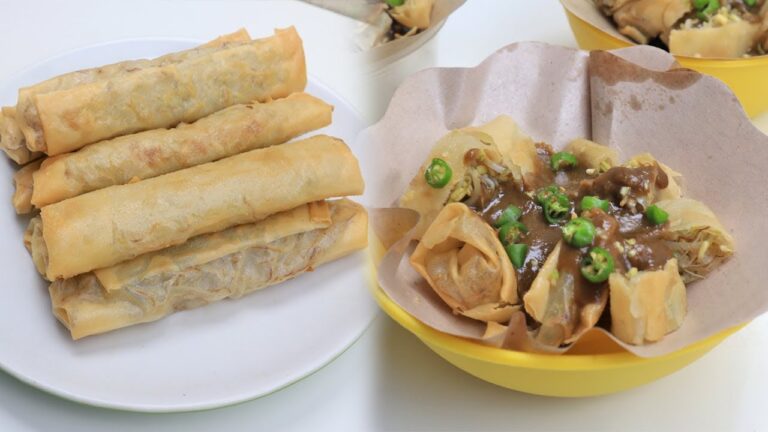Balinese offerings are everywhere you look on the island. Local Balinese communities use them as part of everyday life and not just in major religious ceremonies.
Our guide to these daily Balinese offerings will help you better understand the Balinese people and the Balinese Hinduism which underpins nearly every interaction here in Bali.
Offerings In Bali And The Balinese People
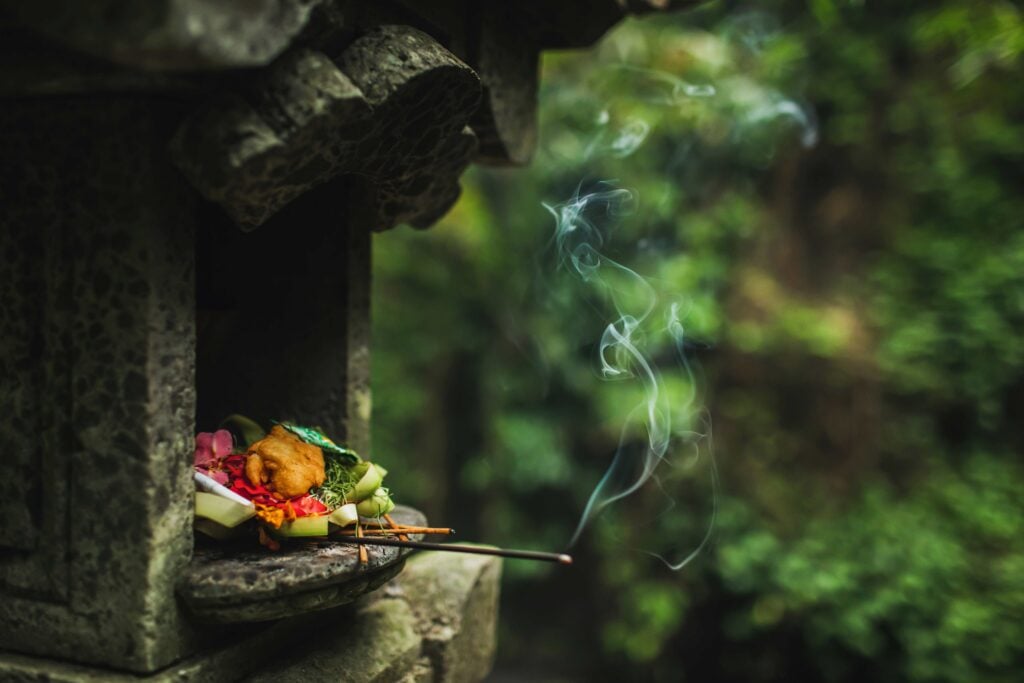
Firstly, it’s important to acknowledge why the people of Bali create Balinese offerings and you can find the answer to that in the Bhagavad Gita:
“Whosoever offers to me with devotion a leaf, a flower, a fruit, or water, that offering of love, of the pure heart I accept (ix:26)”
This is part of a conversation between Khrisna and Arjuna and it makes it very clear what is execpted as an offering.
While you can find Balinese women preparing a wide range of offerings on the island, each offering must contain each of the individual components that are mentioned in the verse.
The good news is that these components are all natural and can be easily found in daily life: colorful flowers, food, palm leaves, etc.
The Balinese provide offerings to help maintain balance between the Hindu Gods and the spiritual realm and the mortal realm of people.
Types Of Offerings (Banten)
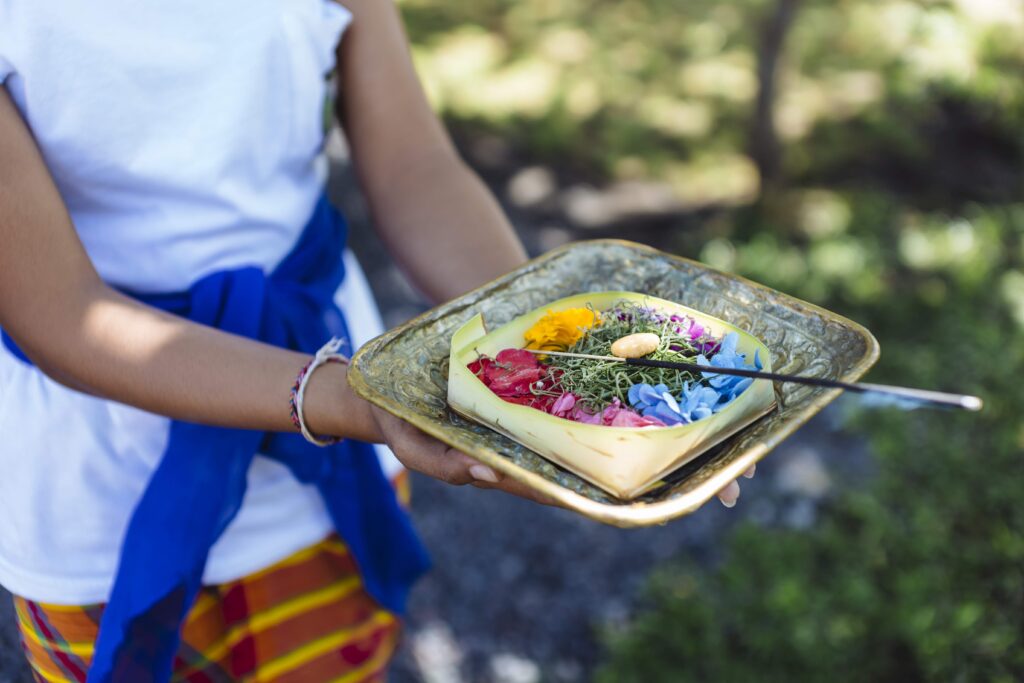
While many people believe because of its prevalance that the canang sari is the only offering in Bali, there are actually many different offerings and each has its own meaning.
Canang Sari/Canang
The canang sari is the, by far, the most common offering and you can often see it on the floor outside of houses and businesses during the day.
The burning incense carries the essence of the offering to the gods themselves and it’s very bad form to step over a canang sari while the incense sticks are still burning.
You should never step on a canang sari, so please keep your eyes p eeled for them and look down before you step forward.
Canang sari, typically, are used for a single day and are then replaced the next day with a new canang sari.
Gebogan/Banten Tegeh
At the other end of the scale from canang sari, you will find the most impressive offerings the Banten Tegeh.
Balinese women carry a large stack of either fruit or food on their hands and must maintain balance as they walk to their local temple.
These offerings come from traditional markets and presented during the “odalan” which is a village temple celebration which occurs one a year in the Balinese calendar.
They are made on a stable base of wood with a spike running down the centre and bamboo skewers are used to secure the food.
There is also a canang sari placed right on top of the offering.
Lamak
A lamak is a placemat that is used to place offerings of natural materials and other products on Galungan Day.
You can see them when you’re visiting temples, they appear to be a mat of colored, dried leaves. Woven palm leaves (coconut leaves) and banana leaves are the most common leaves used for these purposes.
Sampian
These very small offerings sit inside the small tray of the canang sari and they are sort of “practice offerings”.
Young girls learn to make a sampian for their family shrines and canang sari before they are taught more complex designs.
Daksina
These are small baskets made of palm leaves that include a bag of rice, a single duck egg, some coconuts, sacred tools as well as a canang sari.
They create a symbolic fusion of the most important staples in Balinese life for the Hindu Gods and are used mainly on big festival days.
Madya Or Utama
This offering is typically only made by high caste women who have been specially trained in its creation.
The madya or utama is a colorful cake made from a rice dough and then shaped into a semblance of a plant, animal or even person.
The rice cakes can take up to several weeks to prepare and can be up to 5 meters tall!
They are said to symbolize the harmonious relationship of all the elements of the universe from the underworld, through the greater world, to the heavens.
Balinese Women & The Art Of The Offering
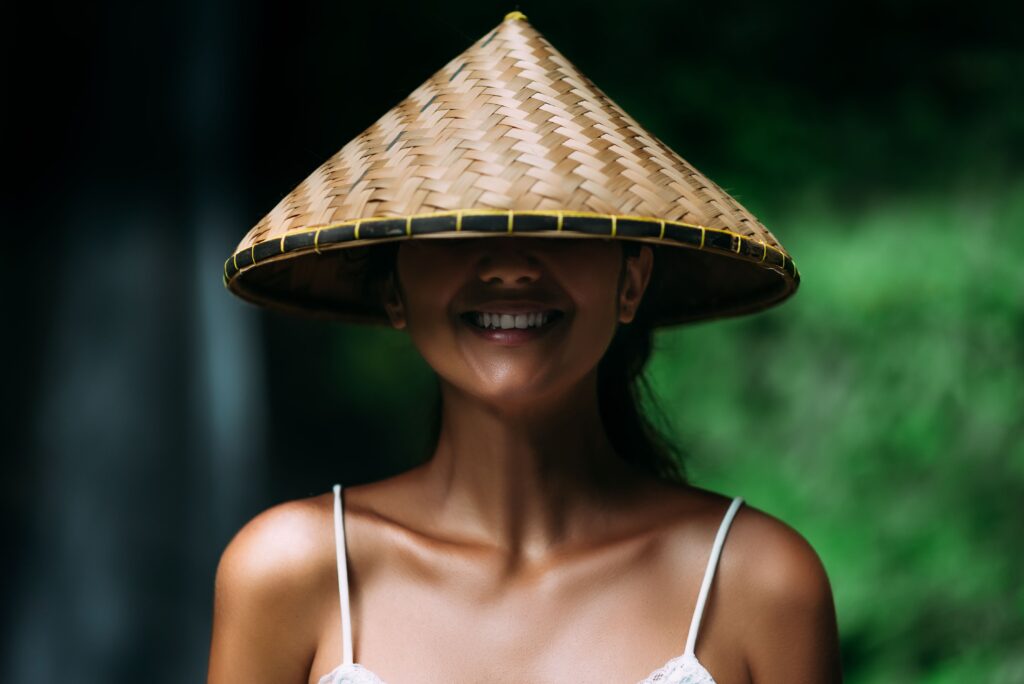
It is Balinese women who are responsible for the creation of offerings in Balinese society and the preparation of offerings is considered an absolutely essential skill.
The skill is called “mejejaitan” and without it, a woman would find it difficult to find her place in society.
Offerings are expected to be as beautiful as possible because that beauty is meant to delight the gods themselves.
If an offering isn’t beautiful enough, it’s possible that the gods would reject it and thus, the wishes that the creator had for themselves.
Interestingly, because the local form of Hinduism stresses the importance of balance – the Balinese don’t just make offerings to “good gods” but they also make them for the gods of negative forces too.
This is because they want to please good forces to work for them and to appease negative ones to ensure that they don’t work against them.
However, Bethara Bethari (offerings to the good forces) are always placed on a higher platform while Butha Kala (those meant to keep evil at bay) are always placed on the ground!
The Self-Sacrifice
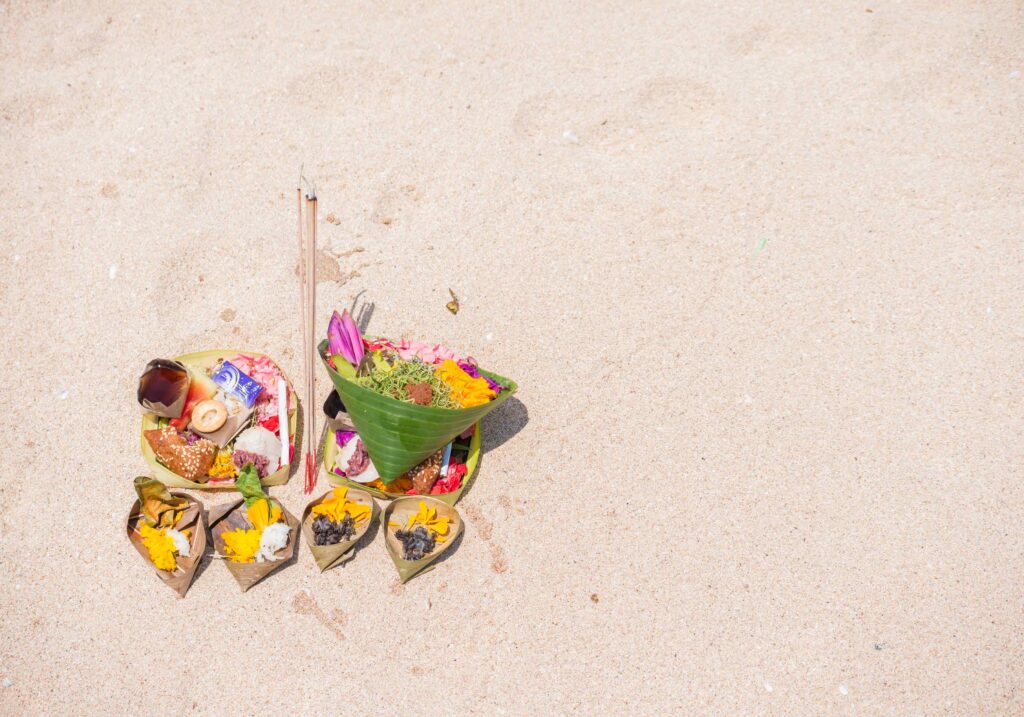
The act of making an offering is seen as an act of self-sacrifice. The person who crafts an offering is giving up their time (and money) to creat the offering.
Thus, they are directly investing part of themselves in the process. They make this sacrifice because it allows them to display their gratitude for their good fortune to the gods and the universe itself.
Not all Balinese can articulate the reasoning behind the offering process because it’s so deeply ingrained in their culture but they all share this motivation.
They sincerely believe that the gods take real pleasure in the offerings that they leave for them.
Etiquette And Balinese Offerings
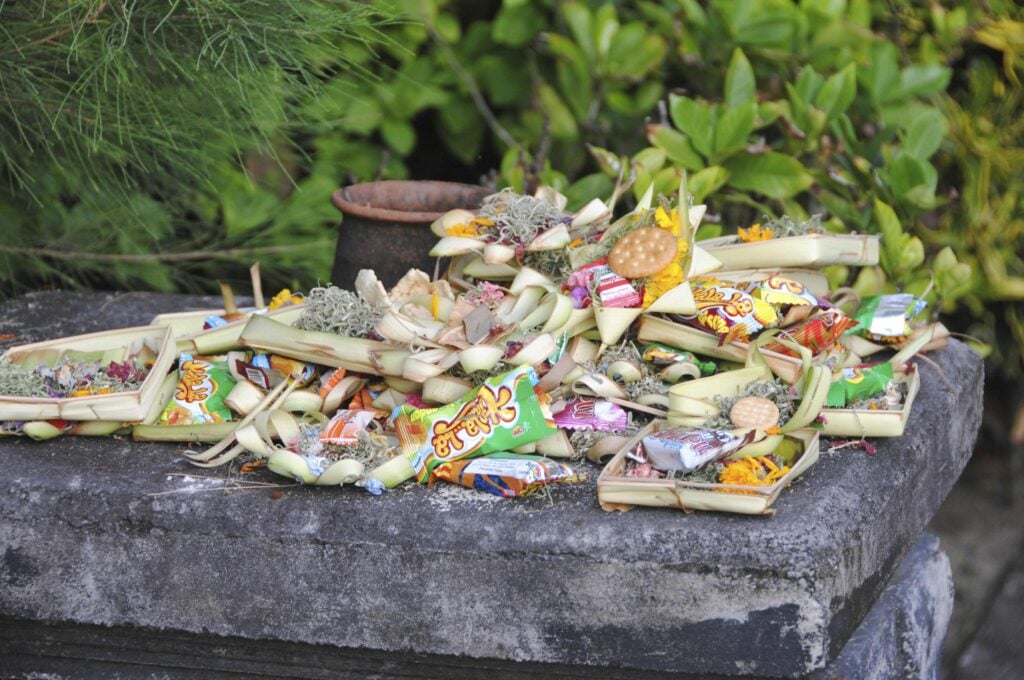
With offerings so deeply rooted in the local culture it’s a good idea to be aware of the etiquette around them before you accidentally cause somebody a deep sense of upset:
Keep in mind that these beautiful offerings are life lessons for the individuals who make them and that they are paying tribue to the major Hindu gods. That’s not something to take lightly in any culture.
Don’t touch, move or otherwise disturb an offering. Step around them if you see them and treat them with respect.
Don’t take photos of the offerings. To you these might seem like a bunch of young coconut leaves with some betel nut and rice wine but this daily ritual of Balinese life has deep meaning and it’s best not to disturb any offering without express permission of its creator.
Don’t try and create your own offerings. This won’t create more joy and in stark contrast, it can cause local people to feel very hurt, the offerings have different meanings but they are all religiously significant and thus, an outsider making an offering can feel like mockery.
Want To Make Your Own Offerings In Bali?

Check out this awesome 3 hour class where you can learn to make canang sari. You’ll learn all the traditional methods of making these offerings and spend some quality time immersed in the local culture. It’s a great way to better connect with the island.
FAQs
What Are The Offerings In Front Of Shops In Bali?
The Balinese offerings found in front of shops in Bali are usually canang sari, the small ever day offerings that are made to think Sang Hyang Widhi Wasa for the good things in life.
They are also seen in temples (pura), household shrines and on the grounds of businesses, government offices, etc.
They are considered sacred and used to express gratitude to the various Gods that impact on the daily lives of the people in Bali.
These offerings are daily offerings and each daily offering is replaced with a new offering after a day has elapsed.
What Are The Buddhist Offerings In Bali?
Balinese offerings are Hindu in nature as opposed to Buddhist.
While Balinese Hinduism holds deep respect for Buddhist saints (the Boddhisatva) there are very few actual Buddhists in Bali or, indeed, in Indonesia.
In total, there are about 0.7% Buddhists throughout all the islands of the archipelago.
If you do encounter Buddhists, they do not use canang sari, but many of their other offerings are similar to those used by Hindus.
What Are The Offering Baskets In Bali?
The small offering baskets in Bali are known as canang sari.
What Are The Flower Offerings In Bali?
There are four types of flowers used in offerings here in Bali and they are colour coded, one for each major Hindu God:
-
White flowers are for Iswara (one of the primary forms of the supreme God) they should point to the East
-
Red flowers are for Brahma (the father of all human beings) and they should point to the South
-
Yellow flowers are for Mahadeva (this is the “great god” of Hinduism) and should point West
-
Blue (or sometimes, green) flowers are for Vishnu (“the preserver” and a key figure of the Hindu Trimurty or Hindu Trinity) and should point North.
In addition, a jepun flower (frangipani) is dipped in holy water and then the water is sprinkled over the daily offerings to help “fuse” the four elements of these important offerings.
Interestingly, you can also find another set of common ingredients in the offerings of Bali: Betel Leaves, Lime and Areca Nuts.
These are ingredients which are meant to reflect the Hindu Trinity and the red of the Areca symbolizes Brahma, the green of the Betel leaf is to symbolize Wisnu and the white of the lime is for Siwa.
Thus, when you see them, they are providing for each of the most important gods within the offering.
What Is The Balinese Offering To The Gods?
There are many different Balinese offerings but the most commmon of them is canang sari.
What Is The Sacred Ritual In Bali?
Perhaps, the best known Balinese ritual is the Melukat. This is a purification ritual which is conducted at places of holy water (water temples) and the idea is to cleanse someone’s mind, body and spirit of any negative forces or evil spirits.
Final Thoughts On Balinese Offerings
The Balinese people give offerings to show their gratitude to the gods for the things that they have and in hopes of future kindness from the very same gods.
Balinese offerings can thus be found throughout Balinese society and not just at sacred sites throughout the land.
The most common offerings are called canang sari but you can find many others if you look closely.
Understanding these offerings helps you to better understand Balinese culture and the Balinese Hinduism that impacts every aspect of life on the island.
